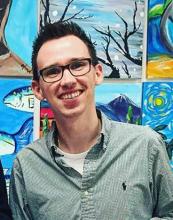As many of you probably know, the first report out session from the Chapel Hill 2020 theme groups was held at Chapel Hill High School. The session included an overview of the process thus far, advice from UNC School of Government facilitators as to how best keep discussions focused, updates from each of the theme groups as to what was discussed at the first theme group meeting, a community and open-mic discussion of the issues that the town will confront. The event was fairly well-attended and a poll of those present suggested that about 20% to 25% of the participants had never attended a Chapel Hill 2020 meeting before. Looking at the meeting through the public participation lens, a few things emerged:

First, as part of the updates from the theme groups, a representative from each group talked briefly about the number of people present and what types of people were missing. The groups ranged in size from three people (Town & Gown) to 30 people (Community Prosperity & Engagement). Though the groups varied in the types of people that they included, most groups seemed to mention that they needed more racial/ethnic minorities, recent immigrants (to the U.S. and Chapel Hill), low-income people, students, officials/staff from UNC, people with disabilities and people who live near the downtown and UNC. Hopefully some of the outreach that’s being done will get these types of people out in greater numbers.
The representatives of the groups also seemed to indicate that most of the people in their groups had a strong interest in the subjects they covered. It’s my hope that the surveys and questionnaires the town plans to use will help to include the perspectives of people that are affected by certain theme areas but maybe don’t have the strong interest in the subject to pull them into a meeting.
Second, during the community discussion, an interesting idea came out. First, there were many questions about the process and about where certain peoples’ voices would be integrated into the process. I think that the town is actually doing a really good job with outreach and providing channels through which people can participate. It seems the primary problem is a lack of communication on how people can be involved. This year I’ve been working on a senior honors thesis that focuses on public participation in North Carolina metropolitan planning organizations and a lot of the research I’ve seen indicates that the best way to reach people is to hit them either person-to-person or through a variety of media outlets, so I think that the town needs to work on that a bit.
On the most basic level, we know have an understanding of what to expect from the rest of the process. Meetings like those held on October 27 will be alternated every two or three weeks with meetings like this one through April. The plan will then go to the advisory boards for review and then before the town council for final approval.
A more complete overview of the process and summaries of the ideas that emerged in each of theme group discussions can be found in Saturday’s agenda.
Issues:


